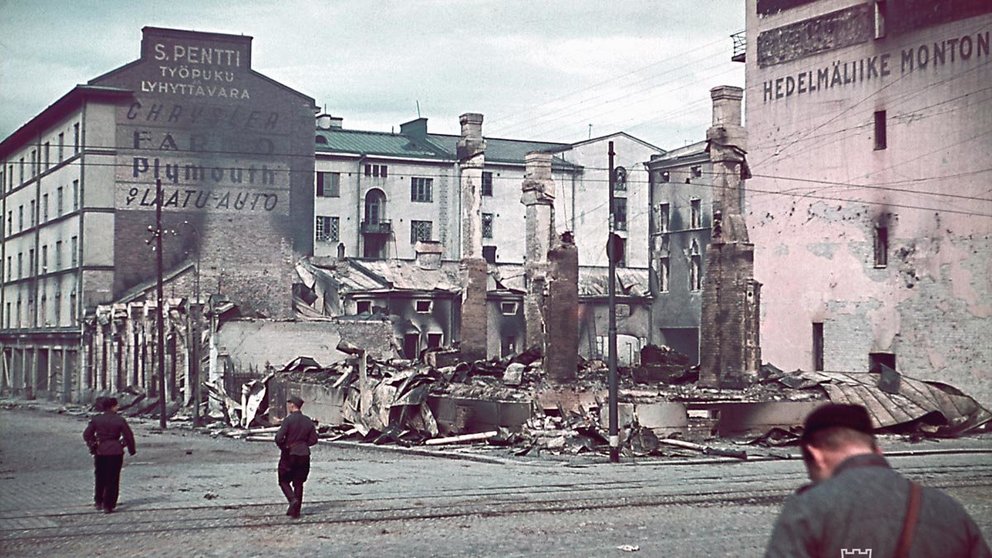By the middle of February 1940, Joseph Stalin was ready to wrap the Finnish operation up. He did not think it would drag on for so long. At the end of the month, the Finnish troops were also tired.
With their limited resources, they were still fighting against the powerful Red Army. They had claimed victories in a number of battles fought in the wilderness of snowbound forests in frigid temperatures. They still had the morale to hold out against the invaders.
However, they were running short of assets. Artillery support was getting increasingly scarce. Cannons had to be moved from one place to another.
There were also orders that the infantrymen could only ask for artillery support if the target was as big as a battalion.
Conversely, the Soviets had a seemingly never-ending supply of Red Army troops. They were fighting tough battles. Heavy battles raged in Tali area where the Soviets broke the Finnish defence line and crossed the Tali river early in March.
The Finns were not only exhausted. They were getting too weak to ensure a full-fledged resistance against the invaders.
 Photo: SA-kuva.
Photo: SA-kuva.
Uncertainty over Allied assistance
Marshal Mannerheim and the Defence Council repeatedly reminded the Finnish government that there was intense need for manpower and firepower.
He made two recommendations: first, peace with the Soviets and if that fails, then asking Sweden for military assistance. He also suggested accepting help from the Western Allies, but only as a last resort.
France had earlier informed Finland that it would send 50,000 troops. Another 50,000 British troops were also ready to assist Finland. French Prime Minister Édouard Daladier and British Premier Neville Chamberlain said the troops would be sent along once a request was made by the Finnish authorities.
The Finns, however, had reasons to be skeptical about the actual number of Allied troops that would eventually reach Finland. As no substantial air power was offered, they were also doubtful about how well the ground Allied soldiers would fare in the battlefield, given the harsh winter conditions the war was being fought in.
There was also the concern that war would escalate in the entire Scandinavian peninsula if Finland accepted the Allied assistance by turning down the Soviet settlement offer. A completely different global situation might emerge as the result of a possible Nazi-Soviet alliance against the Western Allies.
Nonetheless, the Allies continued to persuade Finland into not giving in to Moscow’s demands. The Finnish government was at a loss. It found itself in a very complicated situation.
Sweden says ‘no’
The Finns asked Sweden if it would allow transit so that the Allied troops could reach Finland.
Mannerheim even asked the US to serve as a mediator as Sweden appeared to be adamant that it would maintain its neutrality, no matter what.
The Swedes were aware of the historical relationship between their country and Finland. They said they would only allow unhindered movement of foreign volunteers and firearm shipments across their territory. They also had their insider sources telling them the Allied aid was a bluff and empty promise.
Stockholm finally informed Helsinki that there would be no Swedish military intervention to aid the Finnish troops. It also said the Swedish Cabinet had unanimously agreed not to allow Allied soldiers to cross the Swedish border.
Not a single railway or highway would be left intact if such an attempt was made, Stockholm warned.
These final words from Sweden were disappointing but now Finland had no choice. It had reached the end of diplomatic efforts. Time was running out.
In his book A Frozen Hell: The Russo-Finnish Winter War of 1939-1940, American historian William R. Trotter wrote: “In the end, for all their righteous posturing, the Allies were prepared to give Finland just enough aid to prolong her agony, but nowhere near enough to redress the odds against her. Foreign Minister Väinö Tanner and President Kyösti Kallio held firm in their refusal to play the Allies’ game, and it showed that common sense at least had not deserted the Finns.”
 Viipuri railway station in ruins. Photo: SA-Kuva.
Viipuri railway station in ruins. Photo: SA-Kuva.
Soviets demand much more
On 7 March, a Finnish peace delegation headed by Prime Minister Risto Ryti arrived in Moscow.
Stalin did not participate in the negotiation. He assigned his Foreign Minister Vyacheslav Molotov to deal with the Finns. Communist Party leader Andrei Zhdanov and Aleksandr Vasilevsky, a Red Army career-officer, were also present.
Molotov handed the Finns a list containing some new harsher demands in addition to the previous ones:
- The Karelian Isthmus border would have to extended a few miles further west.
- A large swath of the northernmost Finnish region of Lapland and a 100-mile belt of borderland east of Salla would have to be relinquished.
Certainly, Finns were taken aback as they did not expect the new demands. They tried hard to negotiate further but to no avail.
They had two choices: to accept and sign the treaty, or to keep fighting.
Mannerheim urged the Finnish officials to sign the agreement. He asserted that there would no longer be organised Finnish armed forces to fight the Soviets in a matter of a week.
It was at this point when the negotiators understood the gravity of the situation.
With heads bowed and tears in the eyes, they forced themselves to accept the treaty. While putting his signature, President Kallio said: “May the hand wither that signs such a document as this.”
Two months later, Kallio suffered a stroke. His right arm was paralysed.
*Pictures included in this article by SA-Kuva/Finnish Military Archive.
*NOTE: This article is the 6th of an 8-part series on the Winter War to be published from 30 November (the day the conflict started) til 13 March (when it ended). Next: 'What Finland lost and gained', coming out on 21 February.










